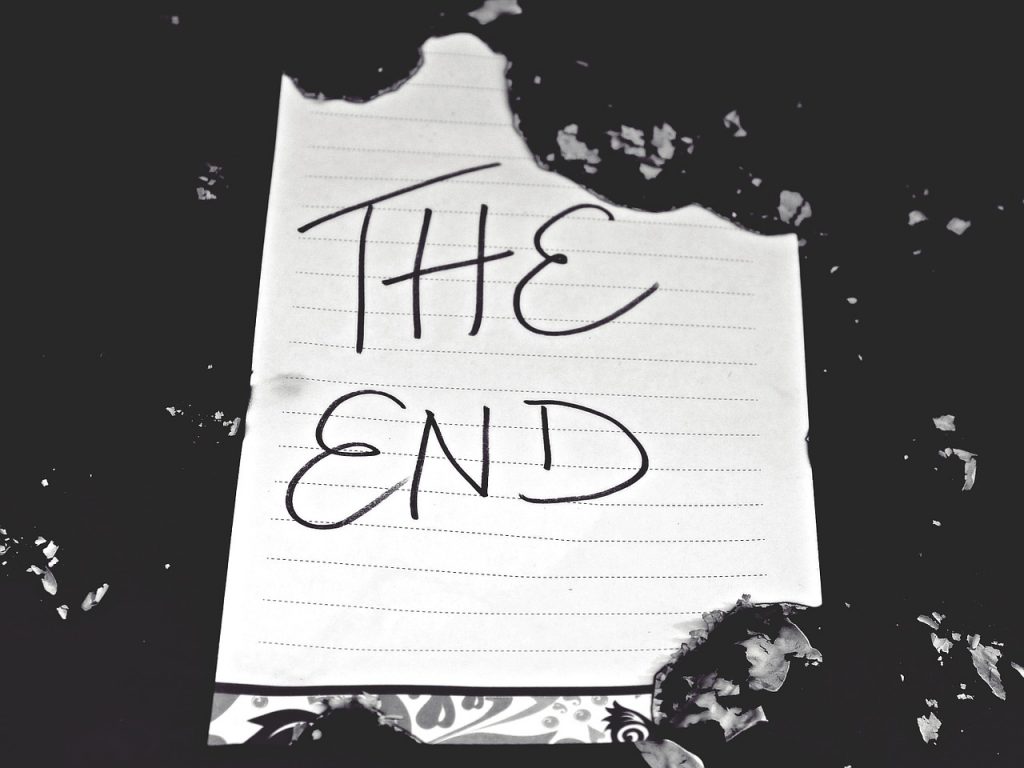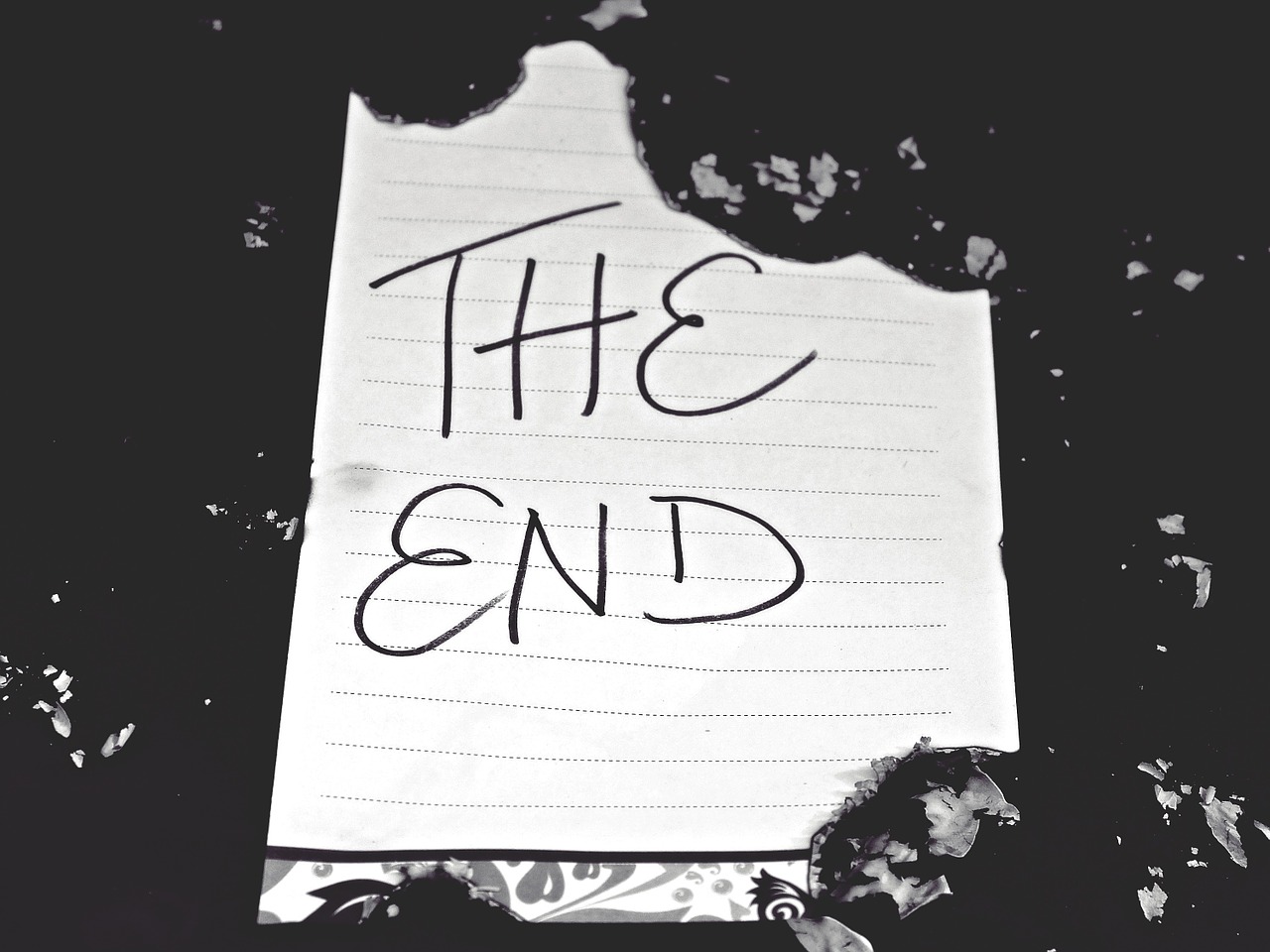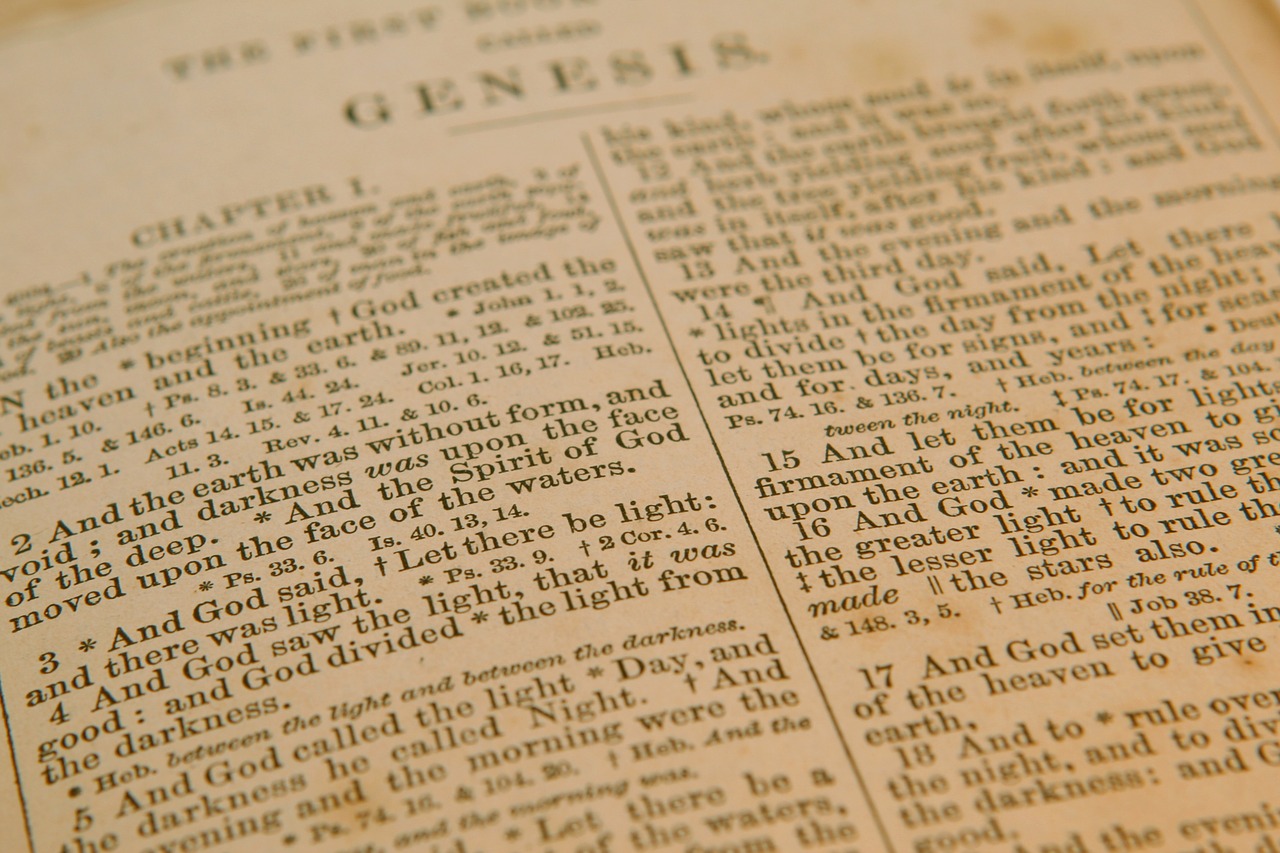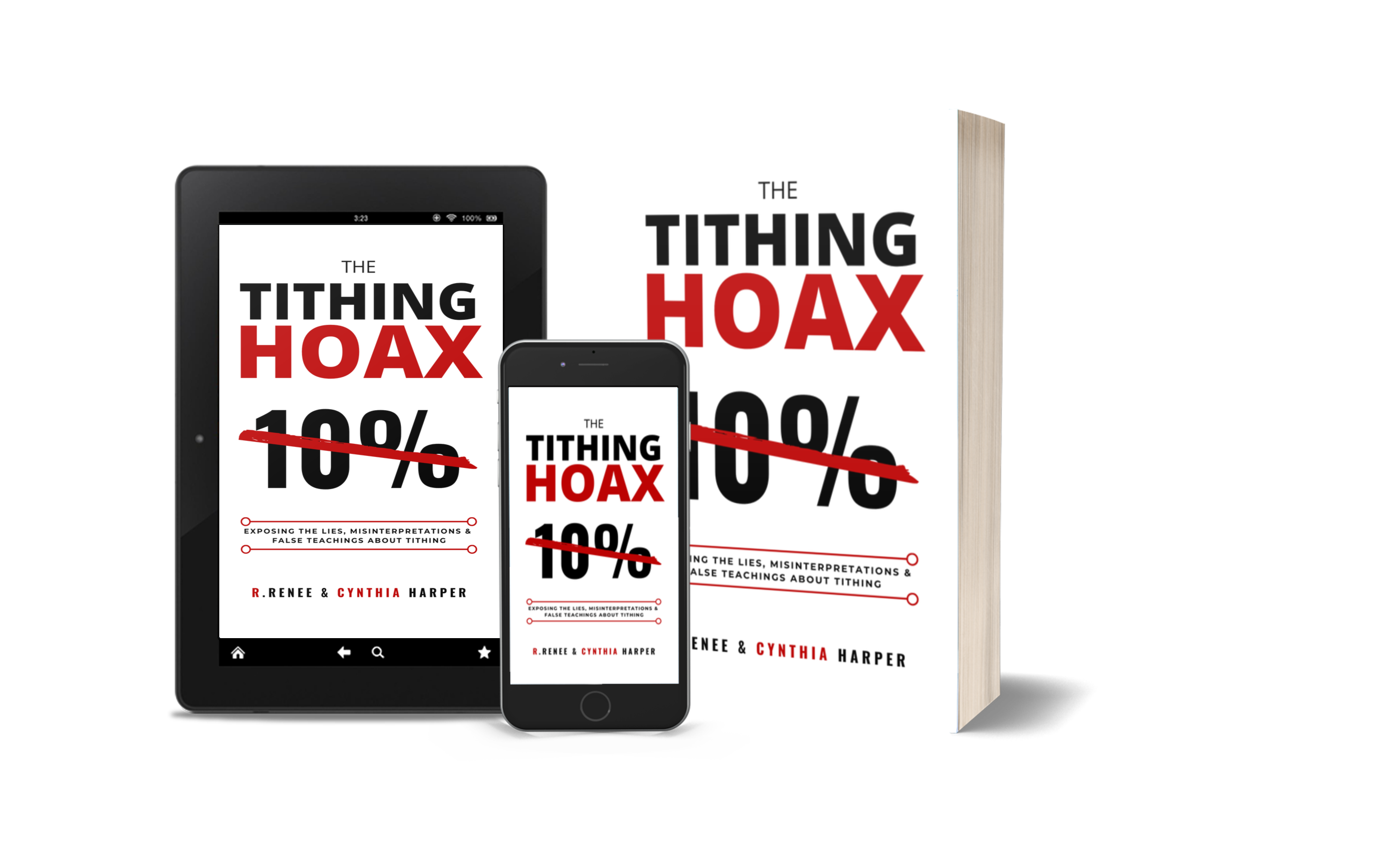Jesus’ death on the cross at Calvary ended the tithe. The Bible states the Old Covenant was nailed to the cross, which includes the tithing system. Although early Jewish Christians continued tithing post-Calvary, the practice ended in 70 AD.

Table of Contents
- Watch the Video
- The Tithe Comes to an End
- Jesus Finished the Work
- The New Testament Begins
- Jesus Fulfills Prophecy
- Jewish Christians Miss the Mark
- Christians Are Set Free From the Law
- Recap
- Outsmart the False Teachers
Watch the Video
The Tithe Comes to an End
There are two endings to the tithing system. There’s a spiritual ending, and there’s a historical ending. The spiritual ending occurred when Jesus said, “It is finished,” when he was crucified on the cross (John 19:30).
Despite this finished work, some early Jewish Christians continued observing the Mosaic Law decades after the crucifixion. They eventually stopped tithing, but this historical fact isn’t mentioned in the Bible.
Let’s dive deeper into each to help you understand the spiritual and historical end of tithing.
Jesus Finished the Work

The spiritual end of tithes occurred when Jesus uttered, “It is finished,” and took his last breath. Now, let’s break down three of the most powerful words in the Bible. We must ask what “it” means and “finished” means. Our understanding of these words provides biblical evidence that tithing was never intended for Christian believers.
The New Testament Begins
The “it” in “It is finished” refers to the Mosaic Law (including tithing). How do we know this? All we have to do is look at what happened when those words were spoken. And what was that? The Temple curtain (veil) was torn from top to bottom (Matthew 27: 50-51).
What does this even mean?
How does it relate to tithing?
The death of Jesus was the start of the New Testament. Under the Old Covenant, individual Israelites (Hebrews, Jews) had no personal relationship with the Lord. Only the Levites and priests could enter certain areas of the Temple.
It was even illegal for non-Levite Israelites to enter sacred sanctuary areas reserved for the Levites and priests. If they did so, It was punishable by death (Numbers 3:38).
Numbers 3:38
38 Moses and Aaron and his sons were to camp to the east of the tabernacle, toward the sunrise, in front of the tent of meeting. They were responsible for the care of the sanctuary on behalf of the Israelites. Anyone else who approached the sanctuary was to be put to death.
New International Version (NIV)
Curtains were used to separate different sections of the Tabernacle/Temple (Exodus 26:1-2). The curtain mentioned in the Gospels (Hebrews 9:3-4) was the one separating the Holy of Holies (Most Holy Place) from the rest of the Temple (and God’s people). The Ark of the Covenant was kept in the Holy of Holies (Hebrews 9:3-4). Additionally, it was a sacred place because it hosted the presence of the Lord.
No one could enter the “Holy of Holies” except the high priest. Even the High Priest could only enter once yearly (Hebrews 9:7). The Mosaic Law established this standard.
The curtain (veil) represented man’s separation from God. Once the curtain was torn, all believers had direct access to the Most High.
Jesus Fulfills Prophecy
It was prophesied a New Covenant would be established. The Bible states the Mosaic Law (including tithing) foreshadowed the New Covenant.
Jesus’s crucifixion fulfilled the Old Testament prophecy on several levels. Jesus finished the work the priests and Mosaic Law (and tithes) couldn’t do. For instance, the Law couldn’t bring ancient Israel to righteousness. However, Jesus’s death reconciled God’s people back to him (Ephesians 2:14-16).
Jesus’ sacrifice at Calvary accomplished other things as well. His sacrifice replaced the Old Mosaic Law with the New Covenant (Hebrews 8:13). Since tithing was a part of the Old Covenant Law, it was also replaced. It was replaced with Grace giving. Two, he replaced the Levitical priesthood with a “priesthood of all believers” (1 Peter 2:5). Of course, Jesus Christ now serves as the High Priest (Hebrews 6:20).
Jewish Christians Miss the Mark
Sometimes people are slow to catch up with the move of God. While many followers of Jesus understood his death was a transition from the Mosaic Law to the New Covenant, others didn’t fully embrace this change.
After Calvary, some Jewish Christians continued following the Mosaic Law (and practicing tithing). This is why Calvary brought a spiritual end to the tithe.
Many Jewish Christians saw themselves as Jewish first and Christians second. Because of this, they continued following the Mosaic Law. Post-Calvary, the Jerusalem Temple still existed.
Additionally, they paid tithes to the Temple. They were more devoted to the Mosaic Law than the New Covenant. This is why the Letter to the Hebrews was written.
The letter’s author has several objectives. These included:
Embracing the New Covenant (Hebrews 8:7-8)
Leaving behind the Mosaic Law practices (Hebrews 9:15)
Accepting the priesthood of Christ (Hebrews 7:28)
Many Jewish Christians of the early church kept straddling the fence. They mix the Law of Moses with the grace of God.
Christians Are Set Free From the Law

It’s the Jewish Christians who wanted Gentiles (non-Jews) to convert to the Mosaic Law to become Christians (Acts 15:1, Acts 15:5). The Apostle Paul and others rejected this idea (Acts 15:10-11). This is very important, especially for Christians today! Please pay attention to this.
Gentile Christians were never under the Mosaic Law. They weren’t required to follow the Law to become Christians.
What does this mean?
Gentile Christians never practice tithing. If you are a Christian who isn’t Jewish, there’s no biblical basis for you to pay tithes. Even if you’re a Jewish Christian, you’re still not obligated to tithe.
Here’s why…
The Roman army destroyed the Second Jerusalem Temple in 70 AD. The destruction of the temple brought an official, historical into the Levitical priesthood. Remember, the Mosaic Law required payment of tithes to the Levites only (Numbers 18:24). The tithing system was established to create and support the Levites and priests.
Once the Temple was destroyed, the tithing system ended. The Ancient Hebrews could no longer send tithes to the Temple. Plus, they had no Levitical priesthood to pay tithes to. Therefore, a tithing system was no longer necessary.
Recap
When did tithes end? Spiritually speaking, it ended when Jesus died on the cross. The moment he said, “It is finished,” and took his last breath, the Mosaic Law, which includes tithes, was nailed to the cross (Colossians 2:14). The moment he died, the New Covenant was established. Under the New Covenant, grace-giving became the standard for believers – not tithing.
Historically speaking, tithing ended in 70 AD. This is decades after the crucifixion of Jesus. Rome destroyed the Second Jewish Temple in Jerusalem in 70 AD. This led to the official end of the Levitical priesthood and the tithing system.
The Hebrew people had nowhere to send their tithes. Plus, they no longer had a Levitical priesthood to support. So, tithing became an obsolete practice among the Hebrews.
Keep this in mind.
The Gentile Christians of the New Testament did not tithe. They were never under the Mosaic Law Covenant. Even though many early Jewish Christians wanted them to convert to the Mosaic Law before becoming Christians, the Apostle Paul rejected the idea (Acts 15:10-11). Therefore, the New Testament Gentile Christians didn’t fall under the jurisdiction of the Mosaic Law. This means they never practiced tithing.
Outsmart the False Teachers

📌 Discover the TRUTH about tithes, prosperity gospel preachers don’t want you to know. 👉 👉Click this link









